Promote biodiversity
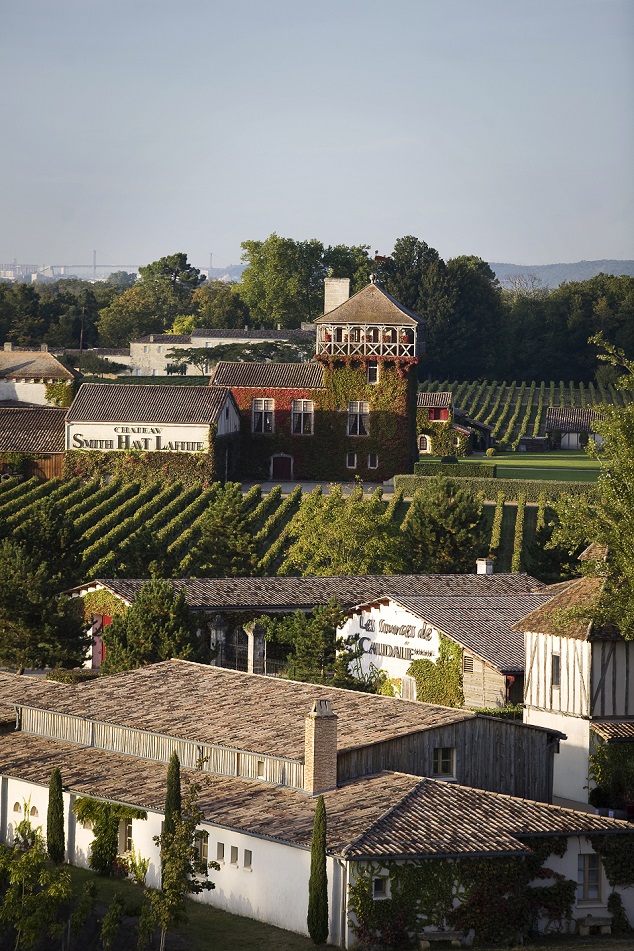
Roaming the vineyards at Bordeaux estate Chateau Smith Haut Lafitte (no5 on the World’s Best Vineyards list), you’ll see shire horses ploughing land surrounded by woodland, orchards and beehives. They’re all cultivated to enhance biodiversity, not just for more complex wines but to ensure the estate’s longevity and minimise its carbon footprint.
Since taking over the historic estate in 1990, Daniel and Florence Cathiard have embraced sustainable practices, becoming fully biodynamic last year “with the goals of stimulating life in the soil and developing microfauna and microflora”.
They have also created an “in-chateau pharmacy” – harvesting plants with medicinal properties to enact phytotherapy treatments in the vines. Here are some examples:
- Comfrey to heal pruning wounds
- Tansy to reinforce immunity
- Horsetail (silica and calcium) to help the vines to fight against fungal diseases and mildew, and to help cope with dry periods
- Oak bark to improve the grape skins’ resistance to grey rot
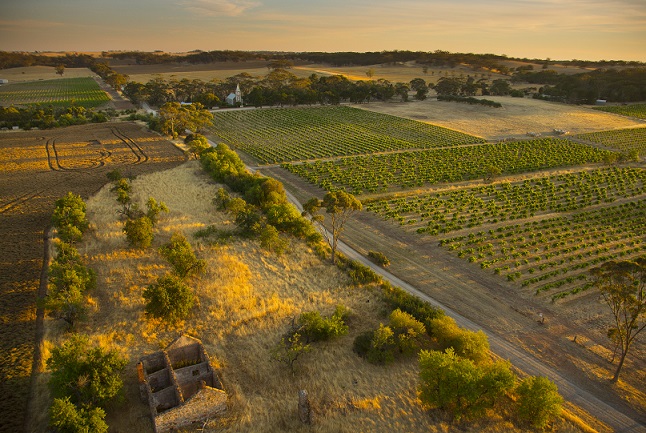
Vineyards are famously homogenous and the lack of biodiversity leads to an imbalance in the natural environment – which leads to a reliance on synthetic pesticides, according to viticulturist Prue Henschke. She joined her husband Stephen Henschke in the family business, South Australian winery Henschke (no26), in the 1980s with a degree in botany and viticulture, and has been at the forefront of sustainability in viticulture in Australia. Concerned for the longevity of the estate’s own-rooted old vines (above), she was determined to find ways of regenerating the health of the soils and removing harmful synthetic chemicals from the equation.
As well as adopting organic and biodynamic practices, Prue has planted an Australian native bush ‘bursaria spinosa’ at the end-post of the vine rows. This acts as a habitat for native beneficial wasps that then fly into the vines and parasitise the problematic caterpillars for the vines. This is complemented by another Australian native, ‘lomandra’ (iron grass), which is planted against the trellis posts within the vine row, providing a habitat and a food source directly alongside the vine. It withstands mowing and provides little competition for soil resources to the vine, having evolved in the dry Australian landscape.
Henschke has also moved completely away from mechanical disturbance and now uses native grasses in permanent swards, as these are typically very short which reduces their water and nutrient requirements as well as the need for mowing.
Henschke also incorporates the cyclic nature of the family farm – from the manure of the cows and the eggshells from the chickens, and production of biodynamic compost from all the winery by-products, such as grape marc, stalks and wastewater. The compost is applied on a three-yearly cycle – with Triticale wheat straw mulch under the vines holding in the soil moisture and helping soil microbes, worms and fungi work the compost into the soil.
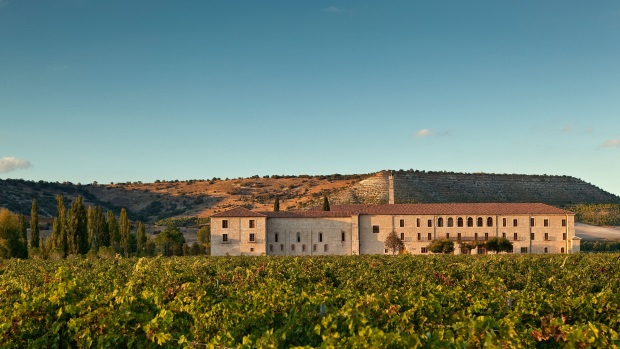
The estate at Abadia Retuerta (no27, above), in central Spain, spans 700ha – only 180 of which are planted to vines: Tempranillo (70%), Syrah (10%), and Cabernet Sauvignon (10%). The remaining 10% is divided between Merlot, Petit Verdot and some white varieties. The estate also has varieties from all over the world in its ampelographic garden as well as pine groves, a lavender field and moorland.
The estate runs eco-workshops that give schoolchildren the chance to plant trees and understand how the estate works (as well as teaching them a responsible approach to wine culture).
Abadia Retuerta, set in a beautifully restored abbey, is working towards becoming organic in 2024 and net zero by 2030. It has a 2,400sq m biodynamic vegetable garden – similar to what the 12th-century monks had – providing fresh seasonal vegetables and greens for its four restaurants, including the Michelin-starred Refectorio. Using seeds recovered from a germplasm bank, the estate has begun to plant varieties of traditional legumes in danger of extinction and is putting them on its menu.
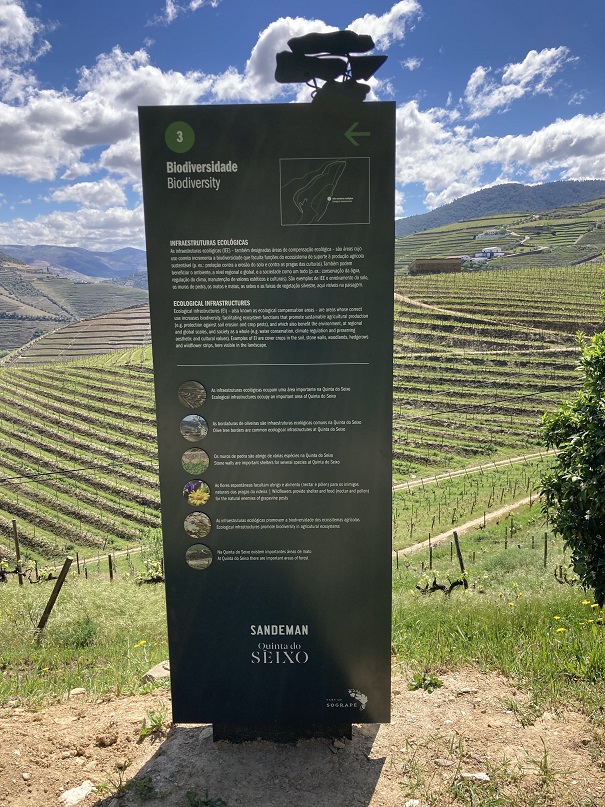
Quinta do Seixo, the jewel in the crown of one of Portugal’s great Port producers, Sandeman, has opened a ‘Biodiversity Route’ (above) to show how “the best Ports are produced in harmony with nature”.
About 1km long and with gentle slopes, the Biodiversity Route at the World’s Best Vineyards’ no42 reveals good practices of nature conservation, local ecosystems and biodiversity, while inviting visitors to enjoy an educational tour that reveals the beauty of the Douro Valley.
Parent company Sogrape “is committed to paving the way for a healthier planet and, in that context, biodiversity conservation is part of our commitments,” says Mafalda Guedes, who is responsible for Sogrape’s global sustainability approach. “With the creation of this route, we seek to involve the community in environmental efforts, as well as recover plant biodiversity, create conditions that foster and support animal biodiversity and improve the environmental quality of the wine ecosystem.”
The new Biodiversity Route is meant to be walked independently, in a relaxed way. It ends with a tasting that can be complemented with a visit to the winery. The estate’s other outdoor visit on offer for €25 is the guided Old Vineyard Route, with a Port tasting in the vineyard and information about the planting methods, the soil and grape varieties.
Reduce or eliminate plastic
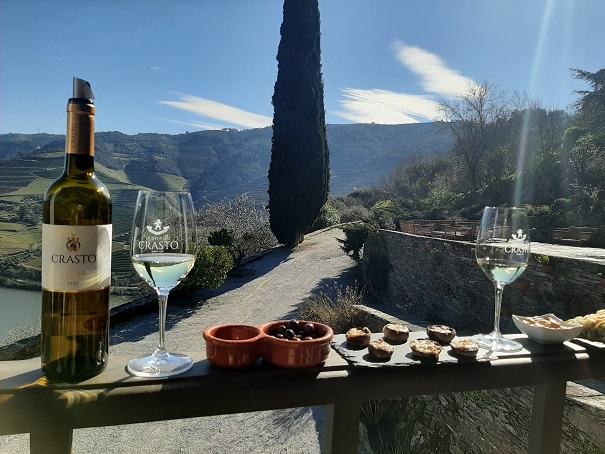
Quinta do Crasto (no15) has abolished plastic from its premises in the Douro Valley, Portugal (above). Crockery, slate and glass are used for food servings; paper bags are used in toilet bins; branded glass bottles are used in the bedrooms and tasting area, reducing the use of plastic and the need to recycle the bottle. All packaging and bags in the shop are paper.
Italian winery Ceretto Aziende Vitivinicole in Piedmont (no29) has also stopped using plastic. Selena Castelnuovo, hospitality manager, tells me: “For years we have totally eliminated plastic – bottles and glasses for water, packages of the snacks that accompany the tastings, and for everything related to preparing the tables for our tastings.”
Abadia Retuerta has eliminated all single-use plastic products. All its tasting materials are made with recycled paper from a company that certifies the use of sustainable forests and sustainable inks; water for visitors comes in recyclable cartons from Agua en Caja; team members are given branded canvas bags, to stop the use of plastic bags; and toiletries in plastic containers in the hotel rooms have been replaced with sustainable products.
Inclusive experiences
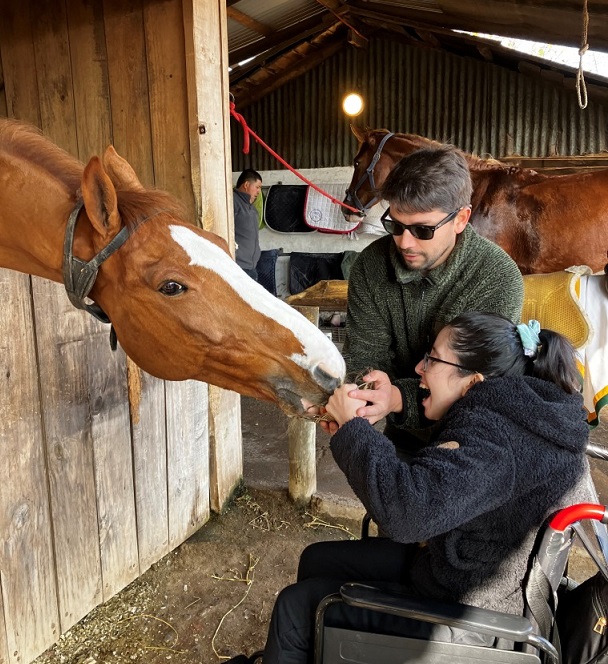
Family-run Viu Manent (no43), in Chile’s Colchagua Valley, has struck up an alliance with an equestrian club and, for the past eight years, has offered equine therapy in the vineyards to local youngsters with learning disabilities (above). Macarena Torres, marketing manager, says it allows the young adults and primary-school children “to generate positive emotional bonds and experience inclusion from love”.
Water management
One of the biggest issues for sustainability in winemaking is the wastewater that results from the vintage process. The approach at family-run Henschke is to collect the entire wastewater stream and to treat it to correct the pH and reduce the biological oxygen demand. It is then stored in a special-purpose dam where microbial activity improves the water quality so it can be used as recycled water for irrigating the vineyards.Abadia Retuerta has also identified the issue of water sustainability. “We have adopted measures for controlling and monitoring water usage in each of our processes,” Enrique Valero, CEO, points out.
Its Santuario Wellness & Spa uses water extracted from a well 120m deep, which is softened and put through reverse osmosis before being stored in a 120,000L tank – resulting in drinking water that is said to be “similar to natural mineral water”; the vines and vegetable garden are drip-irrigated only when necessary with water from the Duero river and canal; water for tastings and the team come from filtered fountains – which allowed the business to remove all individual plastic bottles three years ago.
‘Without third party frameworks, we are just left with claims’
Gain certification
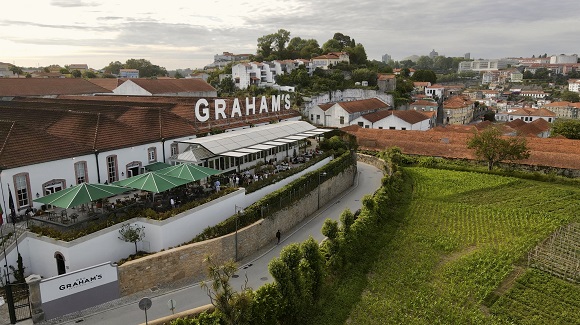
Symington Family Estate, which has 26 quintas covering 2,462ha and 1,114ha of vineyard, is the first to attain Portugal’s new Sustainable Winegrowing Certification. This new certification was created by Portugal’s wine governing body, the Instituto da Vinha e do Vinho, and promotional association ViniPortugal. The objective is to establish a clear, robust, independent, and internationally recognised certification framework that guarantees Portuguese wine producers’ commitment to sustainable, high-quality wine production.
Every area of Symington Family Estates – which includes Graham’s Port Lodge (no40) – was assessed in a comprehensive and demanding audit that lasted three days, conducted by LRQA (an independent certification organisation).
“The fact that there are countless sustainability certifications is a challenge. But without third party frameworks, we are just left with claims made by companies,” admits Rob Symington, director of the family wine business. “People are rightly sceptical and want to see words backed up with proof. I am proud that Symington Family Estates is the first wine producer in Portugal to achieve this certification, having been instrumental in asking for it to be developed. Like most companies, we are far from perfect in terms of our impact on the environment, but we are taking responsibility for it and we are committed to continuous improvement.
“We believe that the best way to ensure we are moving in the right direction is to subscribe to certifications that oblige rigour, progress and certain baseline standards for entry. We have done this through our B Corporation certification (2019), achieving membership of International Wineries for Climate Action (2020) and now Portugal’s Sustainable Winegrowing Certification.”
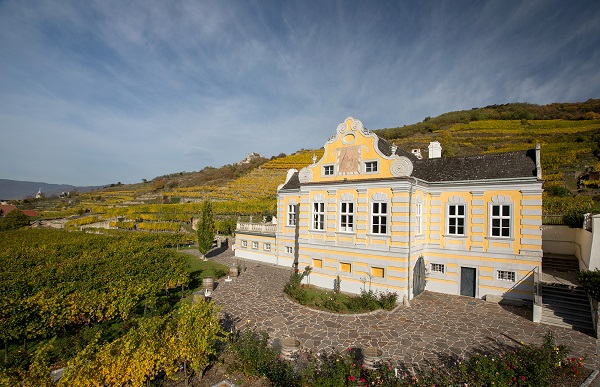
Domäne Wachau (no14, above), a cooperative formed of 250 families, has achieved certification under the Sustainable Austria standard, a quality seal developed by the Austrian Winegrowers Association. An essential part of the scheme is to continuously record and document all the actions taken, including periodic audits by third parties.
Winemaker Heinz Frischengruber explains: “Good wines and a conscientious relationship to the environment are both sides of one coin. We can only improve if our soils and our vines are in balance, if we make good business decisions and take care of our vintner families and employees – in short, where every part engages with the others to work smoothly.”
Save energy
Many of the Top 50 wineries are powered by renewable energy. At Viu Manent, solar panels power 100% of the tourism area.At Abadia Retuerta, 1584 solar panels are being added to the 503 currently powering 25% of the winery. The new panels will cover 44% of the total consumption of the company, warehouse and hotel.
Having read the above, you will realise Abadia Retuerta, in Castilla y León, is one of the most sustainable businesses we have come across here at Canopy. Its other sustainable practices include:
- 100% electric vehicles;
- Sustainable uniforms from Ecoalf;
- A sustainability corner in the visitor centre that allows guests to consult sustainability reports and live consumption of photovoltaic panels;
- Reusing bottles cleaned and sterilised by Ecovidrio; and
- Giving used corks to associations that use them for occupational workshops.

 English
English French
French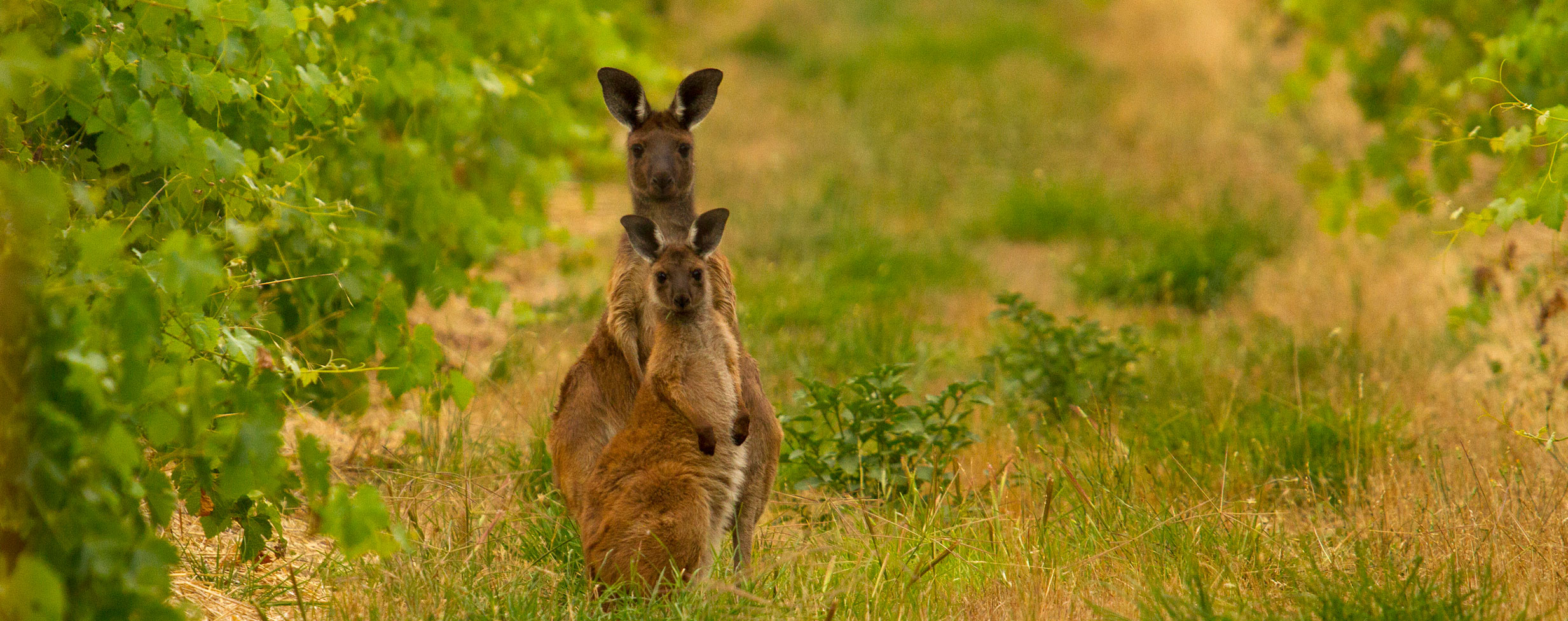



.png)






